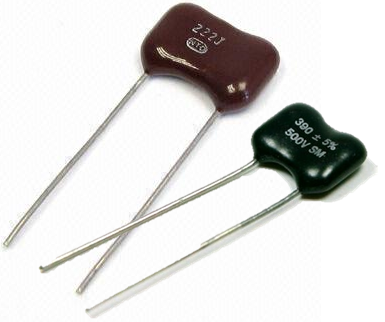Mica Capacitor

Mica capacitors represent one of the most precise and stable capacitor technologies available in modern electronics. These components utilize natural or synthetic mica as their dielectric material, delivering exceptional performance characteristics that make them indispensable in high-frequency applications, precision circuits, and demanding industrial environments.
This comprehensive analysis examines the fundamental structure, operational characteristics, and practical applications of mica capacitors. Engineers, technicians, and procurement specialists will gain detailed insights into the specifications and performance parameters that distinguish mica capacitors from alternative capacitor technologies.
The following technical documentation provides standardized information regarding mica capacitor construction, electrical properties, and implementation guidelines across various electronic systems and applications.
What is a Mica Capacitor?
A mica capacitor is a passive electronic component that stores electrical energy using mica mineral as the dielectric material between conductive plates. The device operates on the fundamental principle of electrostatic charge storage, where electrical energy accumulates in the electric field established between opposing conductive surfaces separated by the mica dielectric.
The capacitor structure consists of alternating layers of thin metal foil or deposited metal films and mica sheets, forming a multi-layer assembly that provides the desired capacitance value. This construction method enables precise control over electrical parameters while maintaining dimensional stability and environmental resistance.
Mica capacitors are classified into two primary categories based on their construction methodology: stacked foil mica capacitors and silver-deposited mica capacitors. Each configuration offers specific advantages for particular applications and operating requirements.
Structural Composition and Construction
Basic Construction Elements
The fundamental structure of mica capacitors incorporates the following components:
Dielectric Material: Natural muscovite mica or synthetic fluorophlogopite mica serves as the insulating medium. The mica sheets are processed to achieve uniform thickness tolerances, typically ranging from 0.01mm to 0.05mm depending on voltage requirements and capacitance specifications.
Conductive Plates: Silver foil or vacuum-deposited silver films form the electrode surfaces. The electrode material selection depends on the specific construction method and performance requirements.
Encapsulation: Thermosetting resins or ceramic housings provide environmental protection and mechanical stability. The encapsulation material must maintain dimensional stability across the specified operating temperature range.
Manufacturing Processes
Stacked Foil Construction: This traditional method involves alternating layers of mica sheets and silver foil. The assembly undergoes hydraulic compression to eliminate air gaps and ensure intimate contact between layers. Lead wires are attached to alternate foil layers to establish electrical connections.
Silver Deposited Construction: Vacuum deposition techniques apply uniform silver films directly onto mica surfaces. This process enables precise control over electrode thickness and uniformity, resulting in improved electrical characteristics and reduced parasitic effects.
Electrical and Physical Properties
Dielectric Characteristics
Mica exhibits exceptional dielectric properties that directly contribute to capacitor performance:
Dielectric Constant: Natural muscovite mica demonstrates a dielectric constant ranging from 5.4 to 8.7, while synthetic fluorophlogopite mica exhibits values between 6.0 and 7.0. This moderate dielectric constant provides stable capacitance values with minimal temperature variation.
Dielectric Strength: Mica capacitors achieve breakdown voltages exceeding 200 volts per mil of dielectric thickness. This high dielectric strength enables compact designs for high-voltage applications.
Dissipation Factor: Quality factor (Q) values typically exceed 1000 at 1 MHz, indicating minimal energy loss during operation. The low dissipation factor contributes to high efficiency in RF and precision timing applications.
Temperature Stability
Mica capacitors demonstrate exceptional temperature stability with capacitance temperature coefficients ranging from +50 to -200 parts per million per degree Celsius. This stability ensures consistent performance across wide temperature ranges without requiring compensation circuits.
Frequency Response
The parasitic inductance and resistance values remain minimal due to the compact construction and short current paths. This characteristic enables effective operation at frequencies extending into the VHF range without significant performance degradation.
Technical Specifications and Standards
Capacitance Values and Tolerances
Standard capacitance values range from 1 picofarad to 0.1 microfarad, with precision tolerances available down to ±1%. The manufacturing process enables tight tolerance control through precise control of mica thickness and electrode dimensions.
Voltage Ratings
Working voltage specifications typically range from 100 volts to 30,000 volts DC, depending on dielectric thickness and construction method. High-voltage variants utilize multiple mica layers with increased spacing to prevent breakdown.
Environmental Specifications
Operating temperature ranges extend from -55°C to +200°C for military-grade specifications, while commercial variants typically operate from -25°C to +125°C. Humidity resistance meets or exceeds MIL-PRF-19 requirements for moisture exposure.
Applications and Implementation
RF and Microwave Applications
High-frequency circuits utilize mica capacitors for:
Oscillator frequency stabilization
Filter networks requiring precise component values
Impedance matching circuits
Coupling and decoupling applications where stability is critical
Precision Instrumentation
Measurement and calibration equipment incorporates mica capacitors for:
Reference standards requiring long-term stability
Bridge circuits demanding accurate component values
Timing circuits where temperature stability is essential
High-voltage pulse applications
Power Electronics
Industrial power systems employ mica capacitors in:
High-voltage switching circuits
Power factor correction networks
Surge suppression applications
Energy storage systems requiring reliability
Telecommunications Equipment
Communication systems utilize mica capacitors for:
Antenna tuning circuits
Signal processing applications
Frequency selective circuits
Phase-locked loop implementations
Performance Advantages and Limitations
Primary Advantages
Mica capacitors offer superior performance characteristics including exceptional stability, low loss tangent, high reliability, and wide operating temperature ranges. The construction provides excellent resistance to environmental factors such as humidity, temperature cycling, and mechanical stress.
Design Considerations
Physical size limitations restrict applications requiring high capacitance values in compact assemblies. Cost considerations may favor alternative technologies for applications not requiring the precision and stability characteristics of mica capacitors.
Selecting the Right Mica Capacitor
Proper selection requires evaluation of electrical specifications, environmental requirements, and mechanical constraints. Critical parameters include capacitance value and tolerance, voltage rating with safety margins, operating frequency range, and temperature coefficient requirements.
Physical dimensions must accommodate available space while maintaining adequate clearances for high-voltage applications. Long-term reliability requirements may justify the premium cost associated with mica capacitor technology.
Understanding these fundamental characteristics enables engineers to make informed decisions regarding mica capacitor implementation in critical applications where performance, stability, and reliability are essential requirements.
Previous Page








